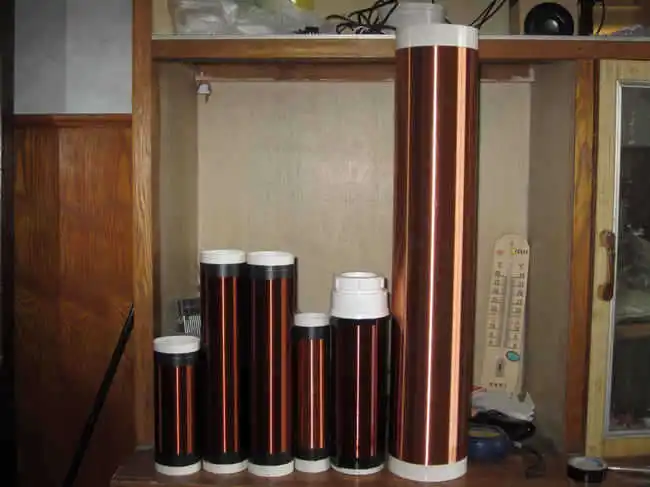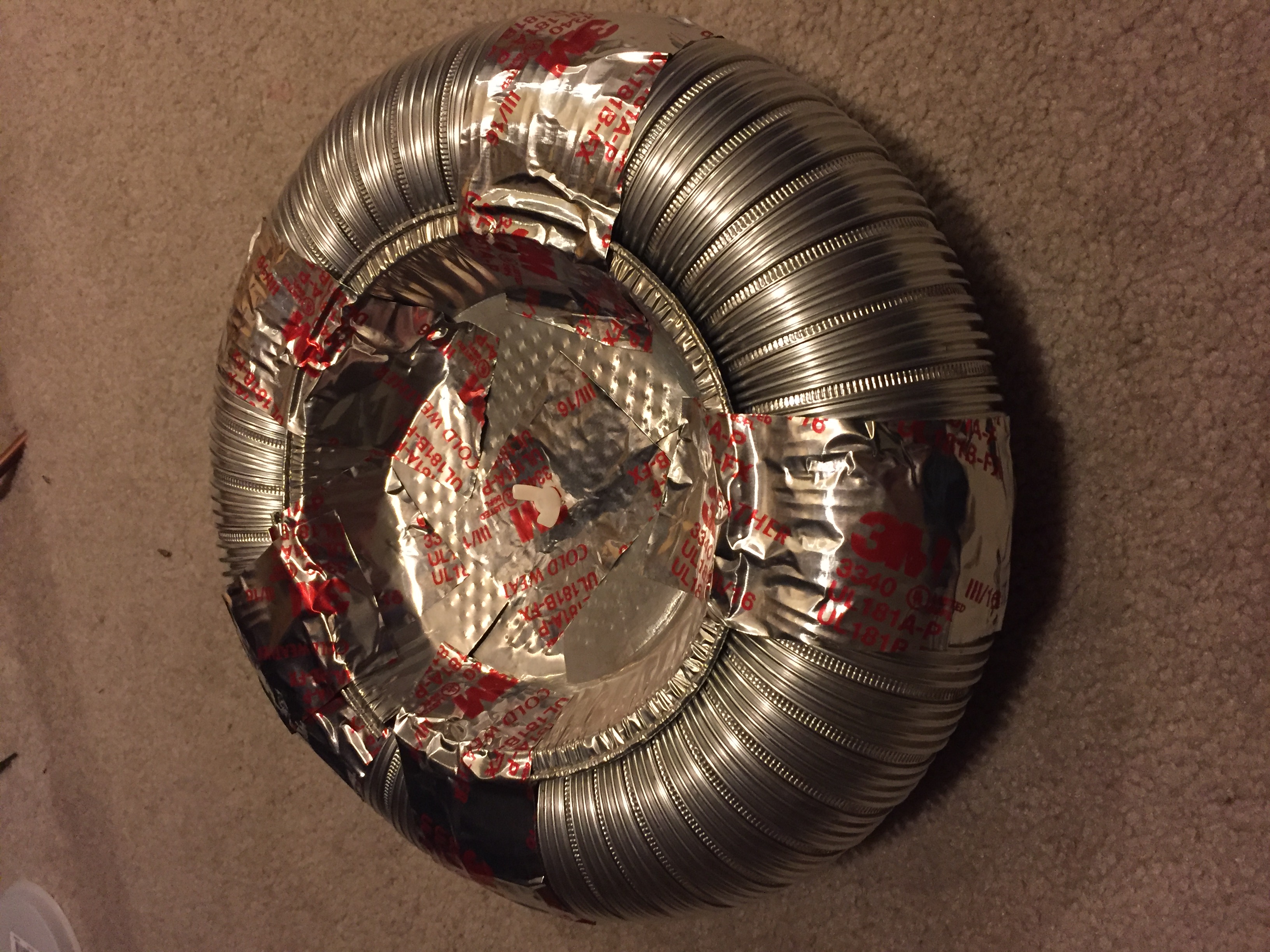 https://ae01.alicdn.com/kf/HTB1eebVKVXXXXbVXFXXq6xXFXXXX/tesla-font-b-coil-b-font-generator-font-b-secondary-b-font-font-b-coil-b.jpg
https://ae01.alicdn.com/kf/HTB1eebVKVXXXXbVXFXXq6xXFXXXX/tesla-font-b-coil-b-font-generator-font-b-secondary-b-font-font-b-coil-b.jpg
The secondary coil is where the really cool stuff starts to happen in a Tesla coil. Without it, all we would have is a glorified LC circuit. Here, the electrical energy from the primary has its voltage increased about one hundred times, using the previously mentioned principle of harmonic resonance to do so. Included in this page is also a description of the topload, which acts as a sort of capacitor and the exit point for the Tesla coil's lightning.
As electrical energy is moved through induction from the primary to the secondary, the design of the secondary is such that the circuit it is a part of has the exact same resonant frequency as the primary coil's circuit. It has a capacitance determined by the dimensions of the topload and of the secondary, and inductance determined by the dimensions of the secondary only. Because of this, harmonic resonance occurs and amplifies the voltage of the electricity significantly. This event is given the intensely cool name of the resonant rise.
The strength with which the primary and secondary are magnetically coupled, it turns out, has a major effect on the operation of a Tesla coil. Although it seems strange at first, it is actually a good thing to have the two coils coupled loosely together. That way, the energy takes a few oscillations of the primary circuit to be fully transferred to the secondary, and the spark gap will stop firing more easily. In stronger couplings, the primary takes less time to transfer all the energy, but that added speed can put stress on the secondary, causing arcs between different points in the windings. In addition, the spark gap may not open at the right times, meaning that the capacitors in the primary circuit may not have adequate time to fully charge.
The secondary coil can easily be the most time-consuming part of building a Tesla coil. The average secondary coil has around 1000 turns of wire, which is a daunting number for someone with no automated system for winding all of it. It can take a few hours, but it does eventually get finished. I chose 24-gauge magnet wire for my own secondary coil of roughly 900 turns. These were wound around a two foot length of PVC pipe, which MUST NOT BE BLACK. black pipes could mean carbon, which means it could possibly conduct electricity, which is bad. A cardboard tube could also be used, as long as it was properly varnished and insulated.
My topload is almost hilariously simple compared to my other components. I took a heating duct, bent it into a torus shape, taped it with aluminum tape, and put two pie tins on either side of the hole for structure. The topload can be any shape, but it must be smooth. Any sharp edges and all the electricity will want to escape out of them. Elimination of these "breakout points" will help create an equal distribution of electrical streamers.

